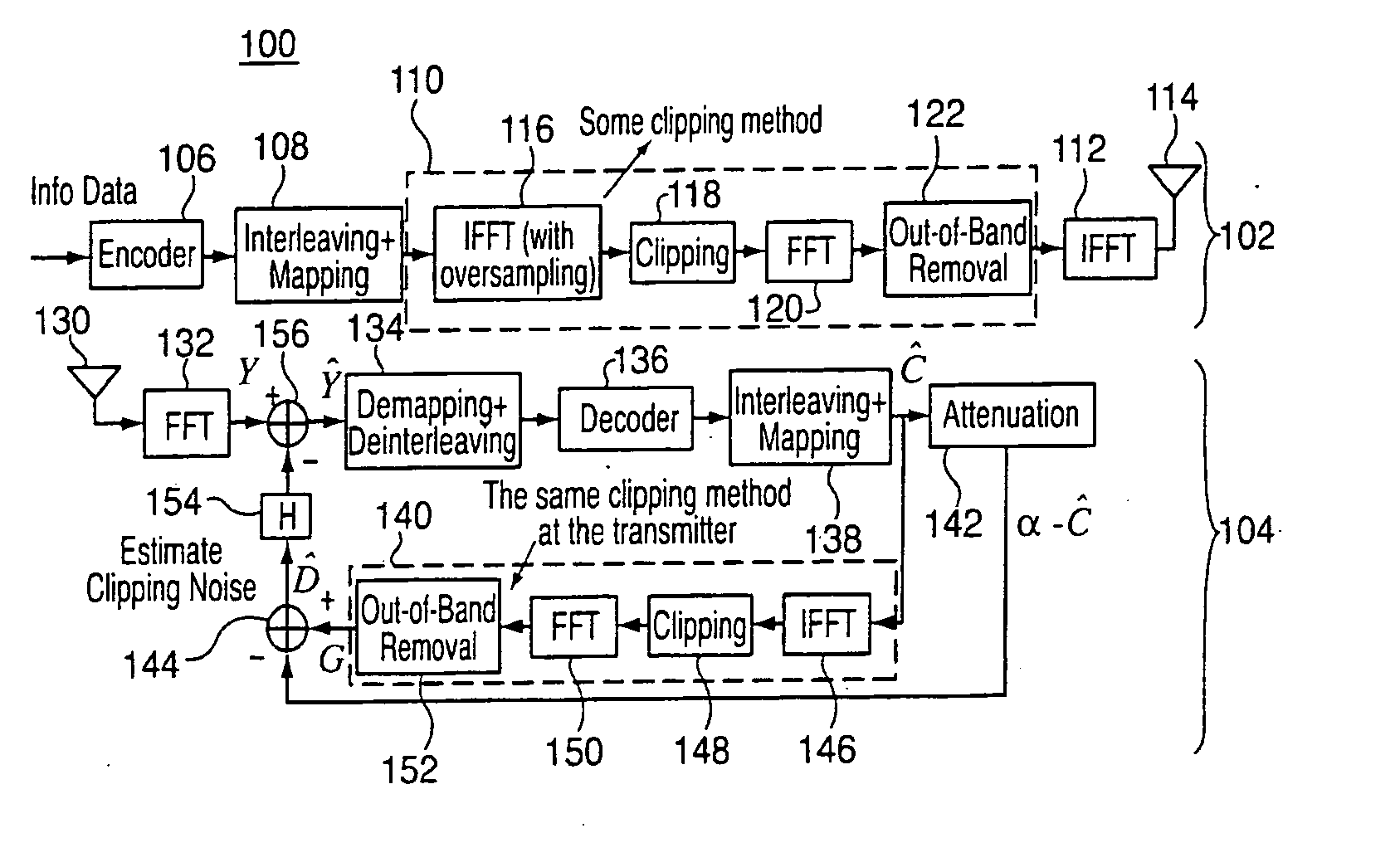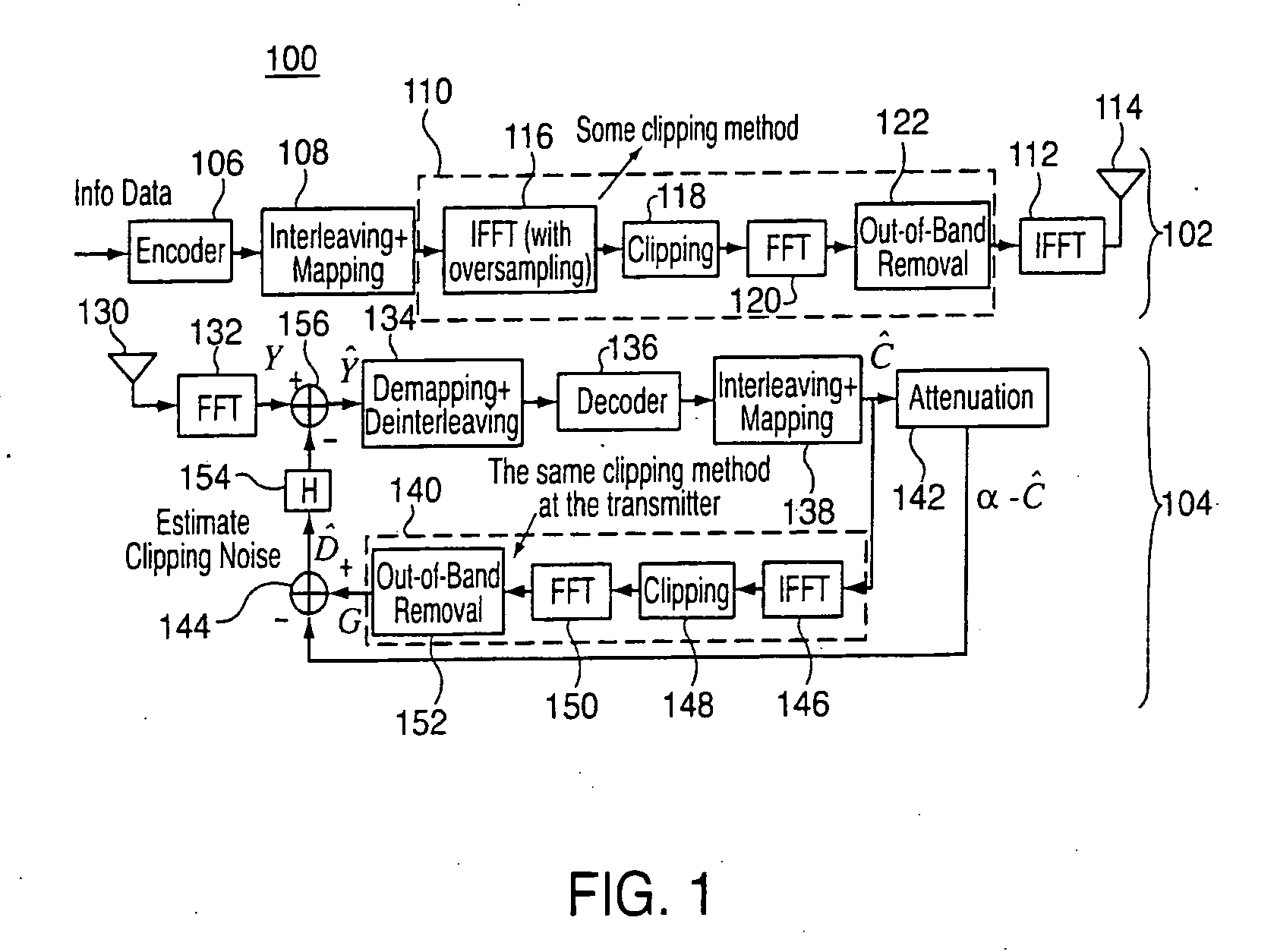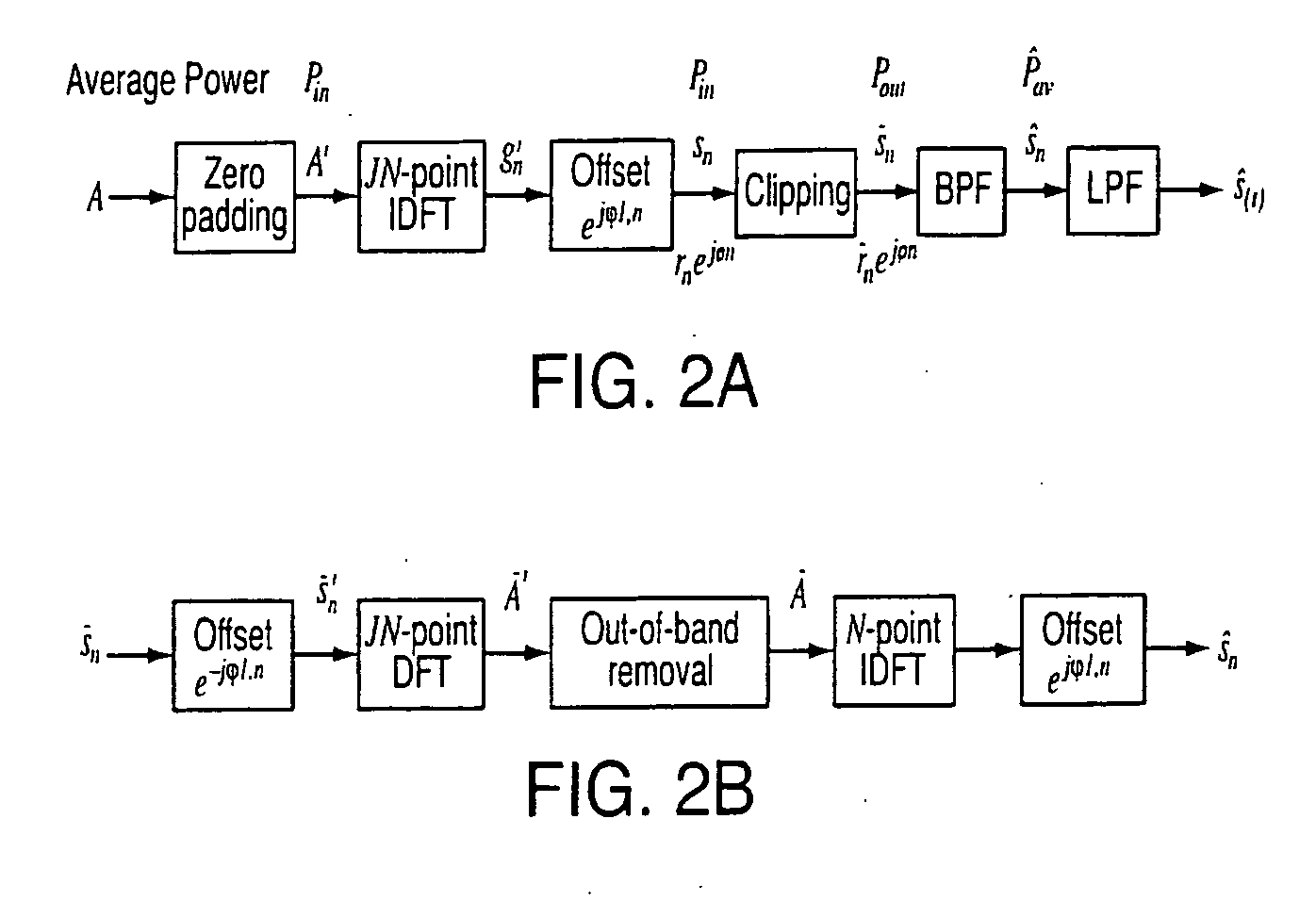Clipping distortion canceller for OFDM signals
a technology of distortion canceller and clipping noise, which is applied in the field of clipping distortion canceller for ofdm signals, can solve the problems of significant distortion and performance loss, high cost of linear power amplifiers with high dynamic range, and all clipping noise to fall in the band
- Summary
- Abstract
- Description
- Claims
- Application Information
AI Technical Summary
Benefits of technology
Problems solved by technology
Method used
Image
Examples
Embodiment Construction
[0028] In general, the present invention is directed to methods and apparatus for iteratively estimate and cancel the distortion caused by clipping noise at the receiver. experimentation and simulation has shown that the methods and apparatus of the present invention may be applied to clipped and filtered OFDM signals such that (for an IEEE 802.11a system) the PAPR can be reduced to as low as 4 dB while the system performance can be restored to within 1 dB of the non-clipped case with only moderate complexity increase and with substantially no bandwidth expansion.
[0029] In this regard, reference is now made to FIG. 1, which is a block diagram of a system 100 including a transmitter 102 and a receiver 104 incorporating one or more distortion cancellation features in accordance with one or more aspects of the present invention. It is understood that the system 100 is disclosed by way of block diagram to illustrate a logical partitioning of functional blocks, which may be considered a...
PUM
 Login to View More
Login to View More Abstract
Description
Claims
Application Information
 Login to View More
Login to View More - R&D
- Intellectual Property
- Life Sciences
- Materials
- Tech Scout
- Unparalleled Data Quality
- Higher Quality Content
- 60% Fewer Hallucinations
Browse by: Latest US Patents, China's latest patents, Technical Efficacy Thesaurus, Application Domain, Technology Topic, Popular Technical Reports.
© 2025 PatSnap. All rights reserved.Legal|Privacy policy|Modern Slavery Act Transparency Statement|Sitemap|About US| Contact US: help@patsnap.com



